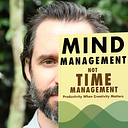Warehouse or skyscraper?
Sometimes, it takes a long time just to reach the point where you can make any progress at all.
Cézanne spent his entire life experimenting with the problem of painting what he saw. Not just photorealism, but what he really saw. He wrote to a friend:
Will I ever attain the end for which I have striven so much and so long? I hope so, but as long as it is not attained a vague state of uneasiness persists….So I continue to study.
A month later, Paul Cézanne died.
But his work inspired a new generation of painters. Pablo Picasso and Georges Braque built upon what Cézanne had accomplished, and started the movement of Cubism.
Picasso said, “[Cézanne] was my one and only master.”
Picasso didn’t experiment in the sense that Cézanne did. He would pick a concept, and go with it. Cézanne said “I seek in painting.” Picasso said “I don’t seek, I find.”
This, according to David Galenson’s Old Masters and Young Geniuses, is why Picasso’s most prolific year was when he was 26. The number of works of significance he did after that age dropped sharply.
Though he lived to be 91, the older Picasso got, the smaller the chance he’d do a painting that was cited in art history books, or included in museum collections. The lower the price that painting sold for at auctions.
By contrast, the older Cézanne was when he did a painting, the more valuable and significant it was. He peaked at 67.
Galenson sees this pattern over and over again. He says that the approach a painter takes determines when in his or her life that painter will peak.
Degas, Kandinsky, and O’Keeffe all peaked in their 40’s. Picasso, Gris, and de Chirico all peaked in their 20’s.
This, Galenson says, is all according to approach: If you dedicate your life to experimenting to try to discover something, it takes you a long time to reach your peak. If you instead try to execute a bold concept, you may fly high sooner, but you’ll burn out faster.
Is this really true? I certainly want it to be, since at 38, I have yet to have all that I pursue really “gel.” Galenson himself is 66, and in a field—economics—with plenty of younger rockstars.
I like to think of it like building a skyscraper, versus building a warehouse. A warehouse, you can complete it quickly. You stack the bricks and build the walls and before you know it, you’re done.
A skyscraper is different. You have to dig into the earth, and pour the foundation, and engineer a structure. That takes a long time. But once you’re done with that, you can build much higher.
Something to think about as you go about your daily work: Are you building a warehouse, or are you building a skyscraper?
